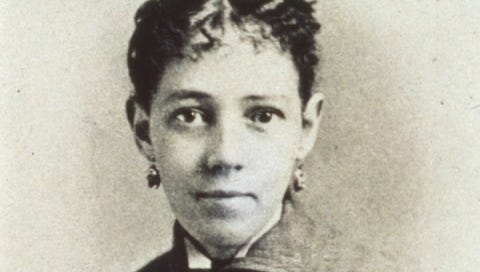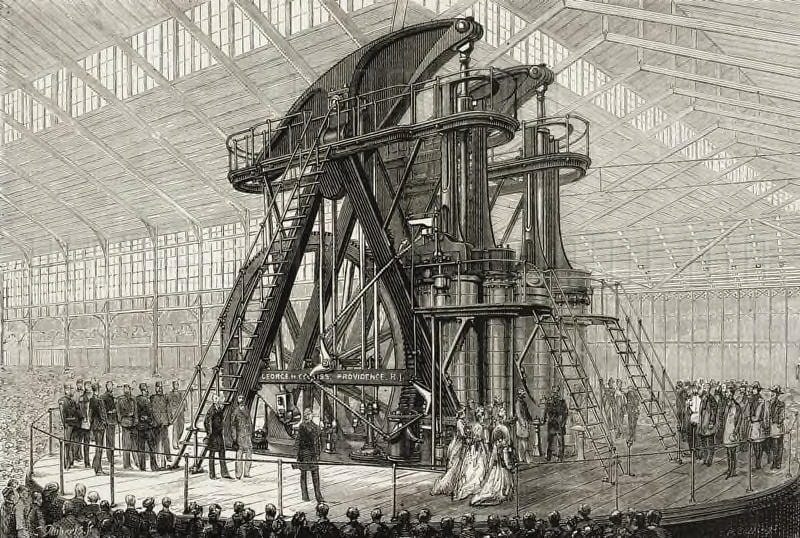Finding Lost Voices: Documenting the Nest and Egg, American Naturalist and Artist Genevieve Estelle Jones (1847-1879) and her lasting book, Illustrations of the Nests and Eggs of Birds of Ohio
A weekly email that brings back the voices of those who have been forgotten or misremembered
Welcome to the latest issue of Finding Lost Voices. I want to begin this week’s post with a thank you to all who have become paid subscribers. I appreciate your support as I transition into my next research project — writing my book Strong about the history of strong-bodied women in the United States from the late 1800s to the present. This work requires travel to research collections, and your subscription to this blog supports that research. If you’ve enjoyed these posts and have the means, please consider becoming a paid subscriber.
It’s a difficult time in America as an artist, especially as an artist who writes about recovering the stories of women. But every week, I’m heartened by the stories, and I find how the stories of women have remained despite history’s pull to try and erase them. Today’s story came from J.J. (a dear friend who established The Sitting Room Library, which I wrote about last year) about the American Naturalist and Artist Genevieve, “Gennie” Estelle Jones (1847-1879).
The Centennial International Exhibition was held in Philadelphia, Pennsylvania, from May to November 1876. It was the first time a World’s Fair was held in the United States, and the newest technologies (like streetlamps powered by a giant Corliss Engine) were on display. John James Audubon's paintings from The Birds of America were also displayed. When Gennie saw Audubon’s lifelike paintings of birds, she was entranced but wondered why he rarely included the birds corresponding nests and eggs. Gennie, who grew up under the tutelage of her father, an amateur ornithologist, had always longed for such a book that she could have used to help her identify the nests she found growing up in Ohio. When she left the Exhibition, Gennie was determined to create such a book.
Gennie was born in Circleville, OH. Her mother homeschooled her until she attended high school, where she excelled in her studies. Growing up, she spent most of her time outdoors, exploring the wetlands surrounding Circleville. She often accompanied her father, who was a doctor, as he visited patients. During the buggy rides, her father taught her all about ornithology and the natural world surrounding them. Usually, they would search for bird nests and eggs to bring home for further study. Joy M. Kiser writes in her biography, America’s Other Audubon, “On one of these outings, Gennie found an intricate nest that her father couldn’t identify….She searched her father’s extensive library to discover the bird that had built it, only to learn that no one had yet written a book on the nests and eggs of American birds.” Gennie loved to draw and wanted to create such a book, but although her desire to make such a book resurfaced again and again over the years, she didn’t have the means to develop it.
Their home was filled with birds. She woke up to the sound of the dawn song from the songbirds they kept caged in their room. Soon, they also had a Cooper’s Hawk, an American Crow, a Turkey Vulture, a Belted Kingfisher, and two Screech Owls flying around their house. So, to say that Gennie was well acquainted with birds would be an understatement.
In 1865, she graduated from high school and continued her studies at home where one tutor found her “the most adept scholar he had ever taught.” She was brilliant; however, there was no opportunity for her Gennie to attend college. When her brother went away to college, he purchased copies of his textbooks for Gennie and himself so she could stay with him. When he returned home to visit, he realized his sister had “got more out of the Greek and Latin poets and Herodotus” than he had understood after being instructed by professors at college.
Like most children growing up during an era of war, Gennie was deeply troubled by it. Her father served as an examining surgeon for the Union Army. Because of this, their family would receive threatening letters, and sometimes their buggy would be shot at. Stress from this harassment gave her severe headaches that made her unable to read or draw.
At twenty-nine years old, Gennie met a man who finally understood her and wasn’t challenged by her intelligence or her height (she was 5’ 10 1/2”). According to Kiser, he was “an exceptional musician and literary critic.” However, he liked to drink, and Gennie’s parents were adamantly against the consumption of alcohol. Her father forbade her to marry him unless he became sober. But he couldn’t do it, and Gennie’s father forbade the marriage. Gennie was devastated. She traveled to Philadelphia to visit her friend Eliza Shulze to distract herself from her sadness. It’s with Eliza that she visited the Exhibition where she saw Audubon’s birds. His drawings rekindled her childhood dream of creating her book documenting nests and eggs.

When she returned home, she told her family that they were entirely on board. At first, she intended to illustrate the nests and eggs of all 320 species of birds, but her father convinced her to narrow her focus to the 130 species found in Ohio. And so the work for the book, illustrations of the Nests and Eggs of Birds of Ohio, began.
Gennie would only complete five of the illustrations before she would die at age thirty-two from typhoid fever. In memory of her, her family completed her book. Gennie’s book would “break ground in natural history illustration.” The American Ornithologists Union named her as someone who “left their names indelibly impressed in the records of ornithology.”
Gennie’s story strikes me for many reasons, but mainly because even though she didn’t live long enough to fulfill her dream, her illustrations live on and are still referenced even though she couldn’t study in college. It gives me hope that what we are doing today and creating will remain no matter what happens.
Sources:
Kiser, Joy, M. Americas Other Audubon. Princeton Architectural Press, 2012
Upcoming Readings
I hope to see you all at some of my upcoming events!
February
February 21, 2:00 PM EST, Iris Jamahl Dunkle’s talk on the Craft of Biography at New York University, New York, NY
February 22, 5:00 PM, An Evening with Iris Jamahl Dunkle at North Bay Letter Press, Sebastopol, CA
February 23, 10:00 AM - 2:00 PM - WORKSHOP Empowering Your Voice Through Multimedia Erasure at North Bay Letter Press, Sebastopol, CA
February 26, 6:00 PM - Iris Jamahl Dunkle reads at King's English, Salt Lake City, UT
February 27, 3:30-5 PM - Iris Jamahl Dunkle reads at American West Center, LNCO 2110, Salt Lake City, UT
March
March 5, 4:30 - 6:00 PM- Iris Jamahl Dunkle in Conversation with Gavin Jones at The Bill Lane Center for the American West: Stanford, CA
March 6 - UC Boulder/Center for the West, online lecture. Details are coming soon!
March 13- 5:00 PM Iris Jamahl Dunkle Reads from Riding Like the Wind: The Life of Sanora Babb, Garden City Community College, Kansas
March 14 - 6:30 PM - Iris Jamahl Dunkle at Books and Books in Key West, FL
March 21 - 2:00 PM Iris Jamahl Dunkle at the New York Public Library, New York City
March 30, 4:00-5:30 PM, Iris Jamahl Dunkle at the Occidental Center for the Arts, Occidental, CA
April
April 12 - 3:00 PM Iris Jamahl Dunkle reads at Full Circle Bookstore, Oklahoma City.
May
May 17 - 5:30 - 7:30 PM - Iris Jamahl Dunkle at the National Steinbeck Center, Salinas, CA







Love this acknowledgement of a woman's work that hasn't been properly recognized. Inspiring!
Hi, I also love finding “lost” or “barely remembered” stories, of women especially! Also, I love stories related to World Fairs and their impact on people. Thanks for posting this one. And it’s fairly recently that I realized just how many people died by the time they reached somewhere between their 20s-50s (if they made it that long), from diseases like tuberculosis, and how much that intimacy with death and the likelihood of it striking one at a young, or fairly young age, was for so long, including in the books (like Brahm Stoker’s Dracula) I so love. If you get the chance, please visit my blog and tell me what you think! I generally try to research, write, and post lesser- or little-known stories of residence and resilience. Although they are extremely powerful and valuable stories, nonetheless.